
Top 5 Bike News Of The Week: TVS Acquires Norton Motorcycles, BMW G...
- Apr 18, 2020
- Views : 15818


TVS’ iQube is born into a family of scooters that set very high standards. The TVS Jupiter, NTorq 125 and the Zest are the straight-A variety of scooters, with strong hearts and good heads on their shoulders. So yes, the iQube has a lot to live up to. Aside from topping the scooter class, as an electric the task of taking TVS Motor Company into an increasingly electric world sits firmly on its saddle. No pressure, huh?
The iQube should be sweating a bit, because after years of being developed behind closed doors, it is now meeting reality, and the competition. The Ather 450 and Bajaj’s Chetak put the iQube on the backfoot, at least on paper, but it’s on the roads it has to prove itself. Instead of the chaos of Bengaluru’s traffic, TVS’ test track at Hosur turned out to be the test centre for the iQube’s battery of preliminary examinations.
Test 1: Physical Fitness
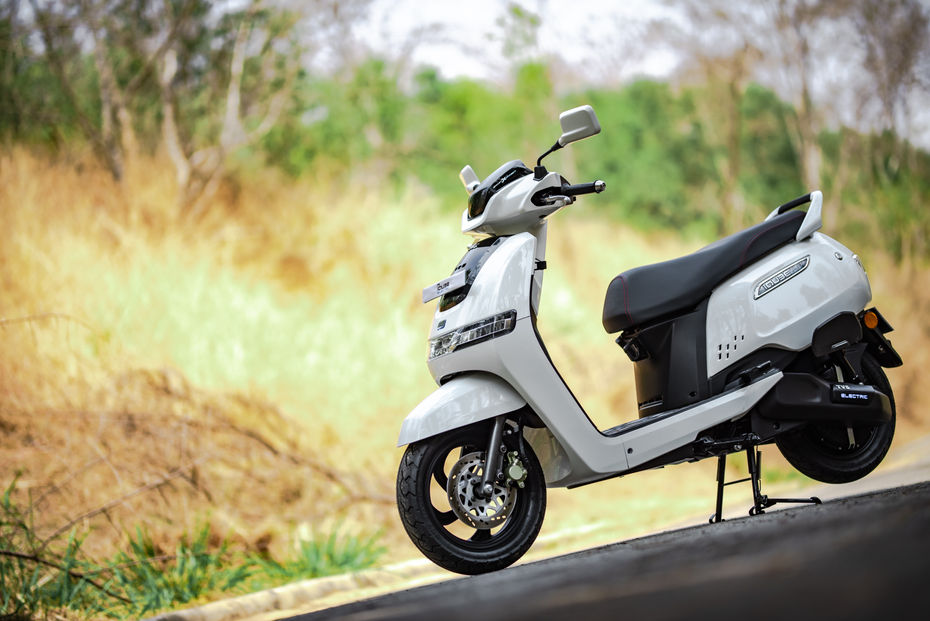
The heart of the iQube is a 3kW hub motor sourced from Bosch, which is a bit disappointing. Even the 4.4kW of peak power, translating to about 6PS of power, sounds quite middling. TVS’ claims of accomplishing the 0-40kph dash in 4.2s and hitting a top speed of 78kph don’t mean much either, unless it does so in a fun and confident manner.
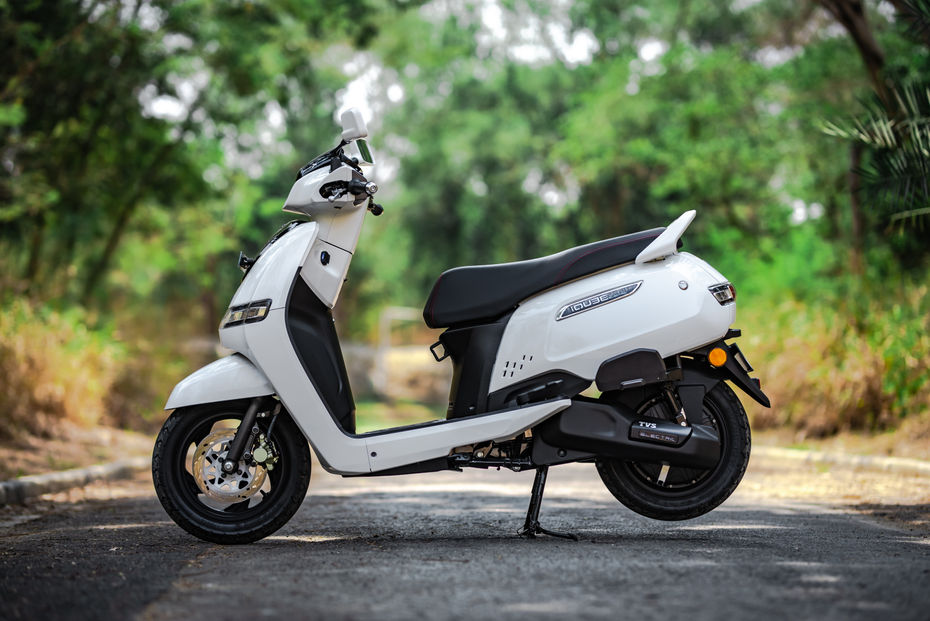
And, it does, convincingly. The hub motor is an unconventional layout but its claimed 140Nm of torque at the rear wheel feels urgent and plenty. Even in Eco mode the torque will get you to 40kmph swiftly, before tapering off towards the 45kmph limiter. Even with a pillion on board, performance doesn’t feel sluggish. You can toggle to Sport mode even on the go, requiring just a dab of the Mode button on the right-hand-side switchgear.
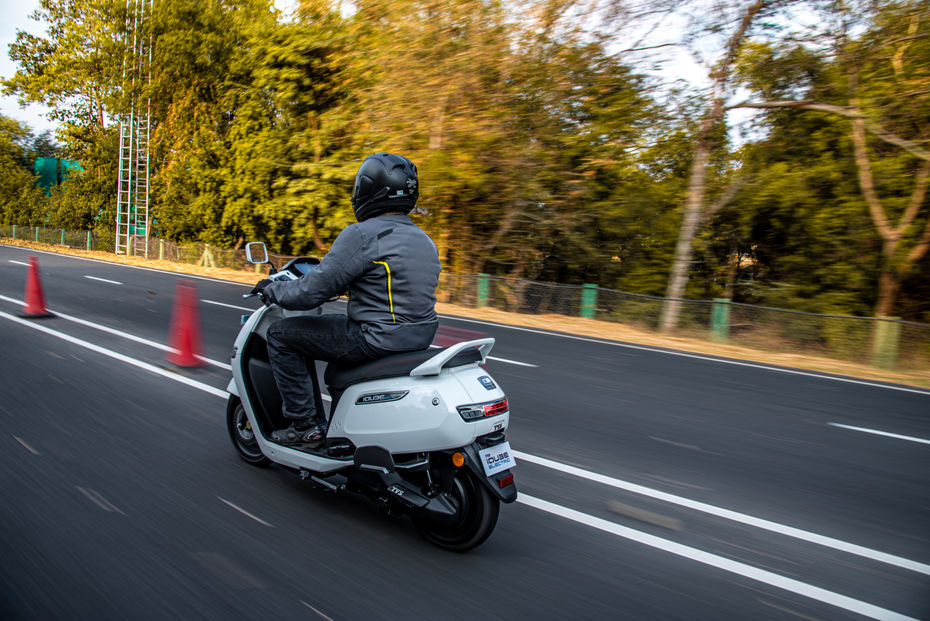
Once freed of the 45kmph cap the motor hauled the iQube and its portly rider to its 78kmph top speed without any hesitation. Electric motors tend to lose steam at higher speeds, but that’s not the case with this TVS as the electric motor’s 4.4kW peak power is available for sixty seconds! Which is plenty for overtakes or just some fun.
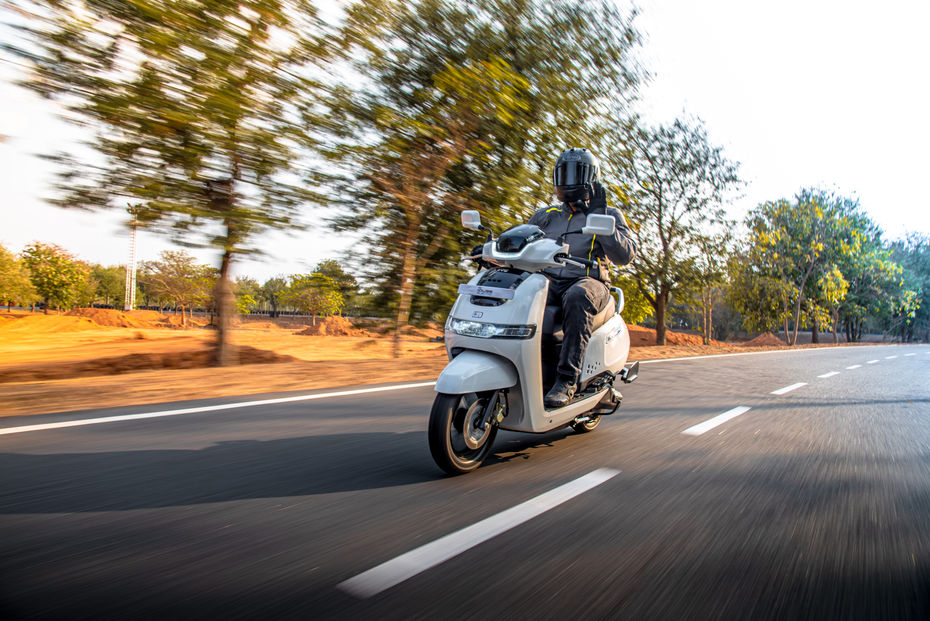
Did it sweat? Whimper or grumble? Far from it. The iQube’s refinement even when being dealt with almost non-stop full-throttle use remained absolutely smooth. Also, there was no whine whatsoever. Both distinct advantages of the compact and efficient hub motor.
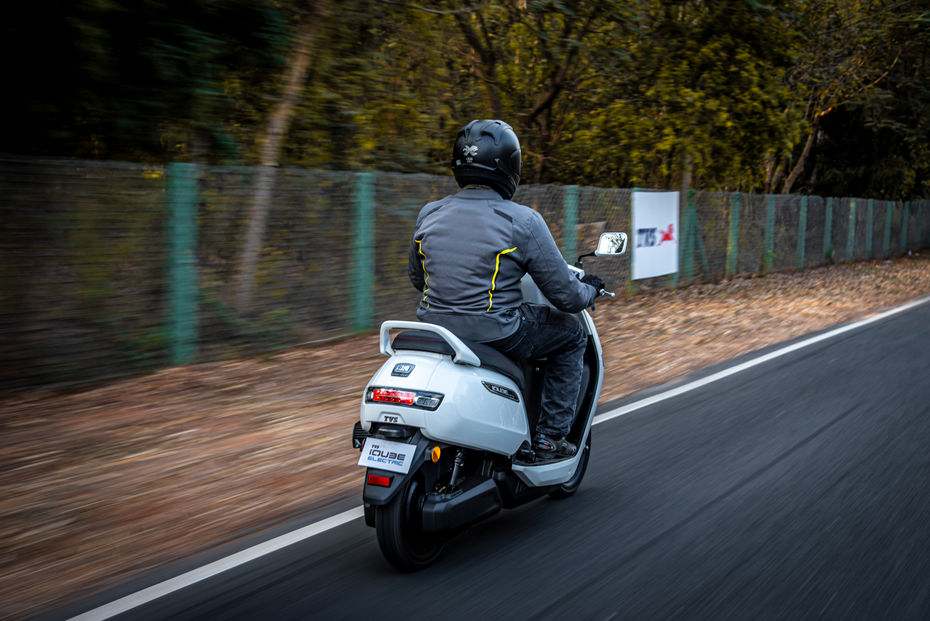
The regenerative braking system uses the electric motor as a generator, generating electricity which then tops up batteries. This gives the feel of “engine braking,” slowing the iQube down like a regular petrol-powered scooter. The amount of regenerative braking and when it cuts in cannot be controlled by the rider. However, when the battery has more than 80 percent charge the regen system does not cut in and the iQube coasts easily for long distances.
Result: Flying colours.
|
Powertrain |
Ather 450X |
Bajaj Chetak (Premium) |
TVS iQube |
|
Continuous Power |
3.3kW Continuous power |
3.8kW Continuous power |
3kW Continuous power |
|
Peak Power |
6kW Peak power |
4.08kW Peak power |
4.4kW Peak power |
|
Motor Torque |
26Nm |
16Nm |
140Nm (hub motor) |
|
Top Speed |
80kmph |
60kmph |
78kmph |
|
0-40kmph acceleration |
3.3 seconds |
NA |
4.2 seconds |
|
Reverse Mode |
Yes |
Yes |
Yes |
Test 2: Chemistry
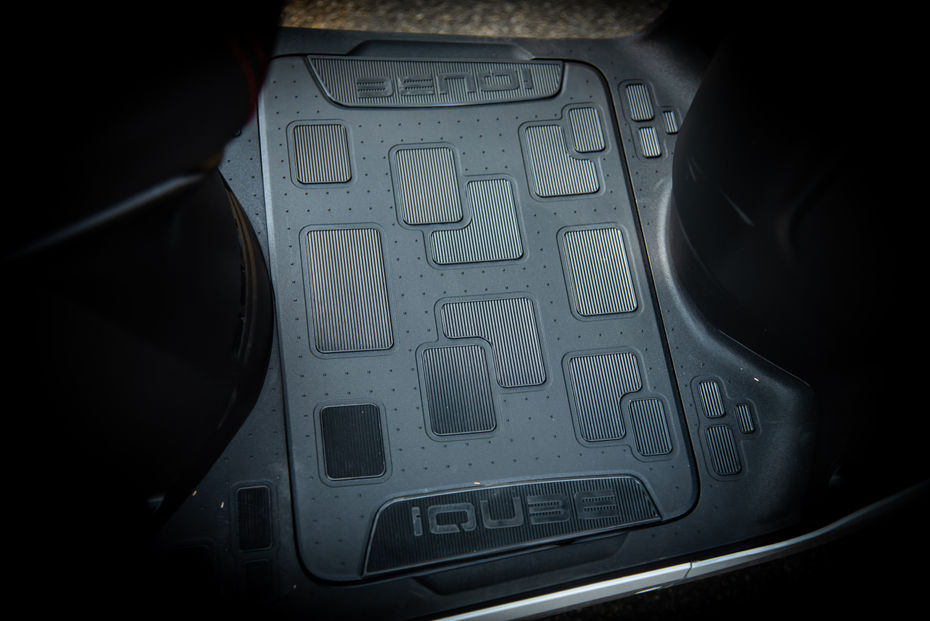
Lithium-ion is the iQube’s chosen chemical combination. These cells are packaged into three IP67 rated packs on a dedicated and cutting-edge line at Hosur by TVS. This results in 2.25kWh of usable capacity, while the installed capacity is in the region of 2.6kWh. This is less than the competition and the the claimed range of 75km in Eco mode and 55km in Sport mode isn’t segment topping either.
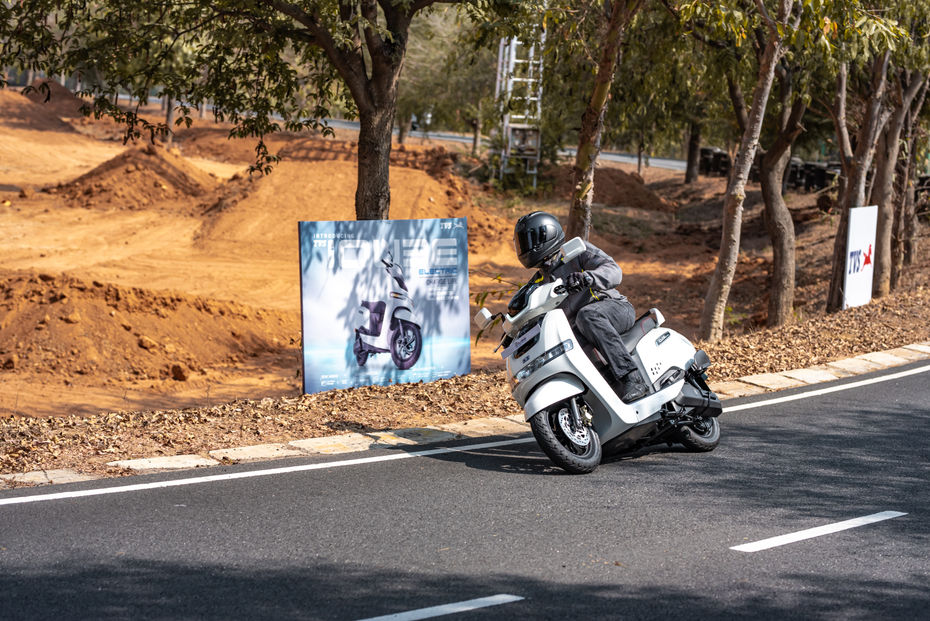
Did we ride like responsible road testers to stretch the range? Hell, no. The TVS test track is a “P” shaped loop with two long straights linked by a long right. Doing 45kmph unendingly would have killed a part of our souls, mother promise! But do we have the answers? You bet. Pre and post ride pictures of the instrument cluster gave us just the information that we needed (see table below). Ridden primarily in Sport mode with barely any opportunity for regen to top up the batteries, this could be considered a worst case showing. Hence, we would say with confidence that we expect the iQube to exceed TVS’s claimed range figures.
Run 1
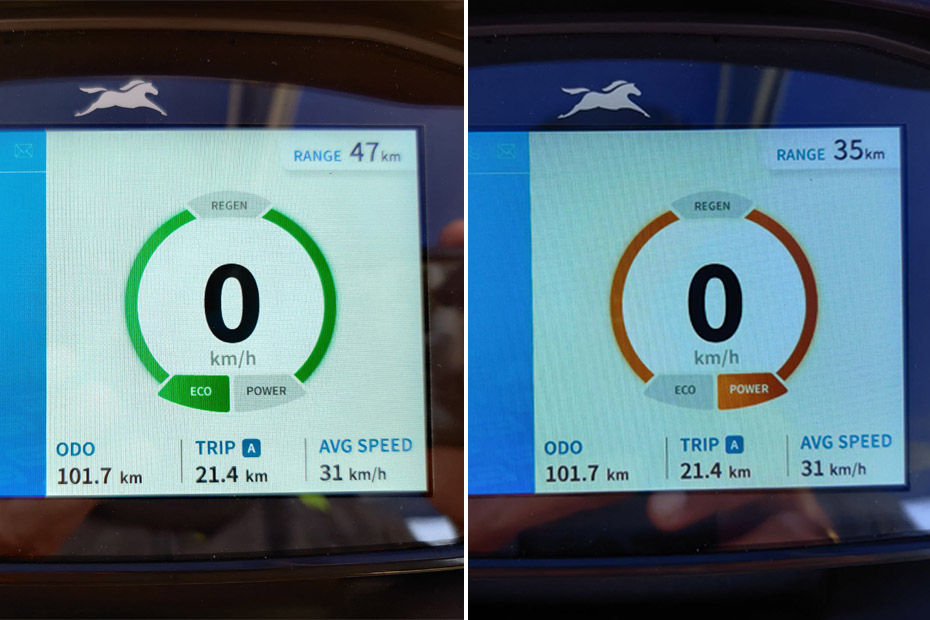
|
Run 1 |
SOC % |
Odo |
Range - Eco |
Range - Sport |
|
Start |
97 |
84.4 |
73 |
53 |
|
End |
63 |
101.7 |
47 |
35 |
|
Change |
34% |
17.3km |
26 |
18 |
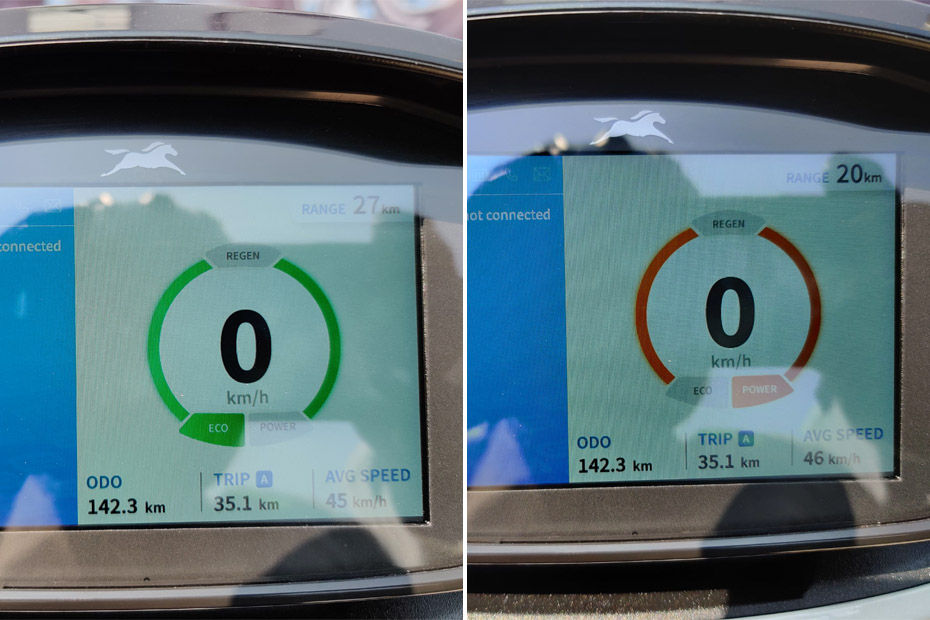
|
Run 2 |
SOC % |
Odo |
Range - Eco (km) |
Range - Sport (km) |
|
Start |
72 |
126.7 |
54 |
40 |
|
End |
36 |
142.3 |
27 |
20 |
|
Change |
36% |
15.6km |
26 |
18 |
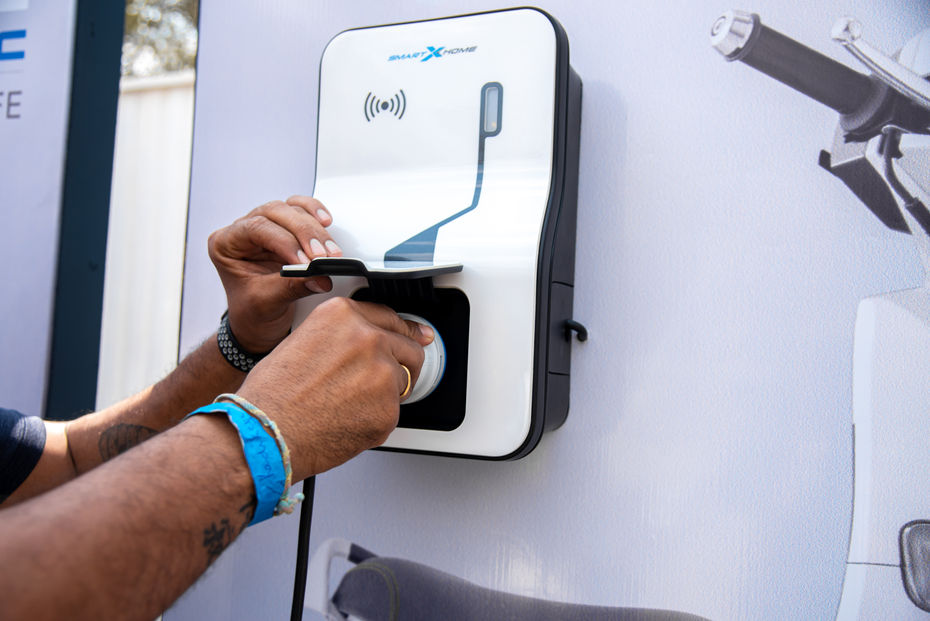
Sadly, though, the iQube doesn’t come with fast charging right now. However, using a regular charger it can go from 0-100 percent in 5 hours. The real issue with the charging process is the cable, which can easily be removed from the wallbox or the scooter as it has no locking mechanism. However, if someone were to disconnect the cable, the user would get an alert on the registered mobile device’s TVS app. Thankfully, the power supply is controlled by an RFID card so it cannot be misused.
Test 3: Physics
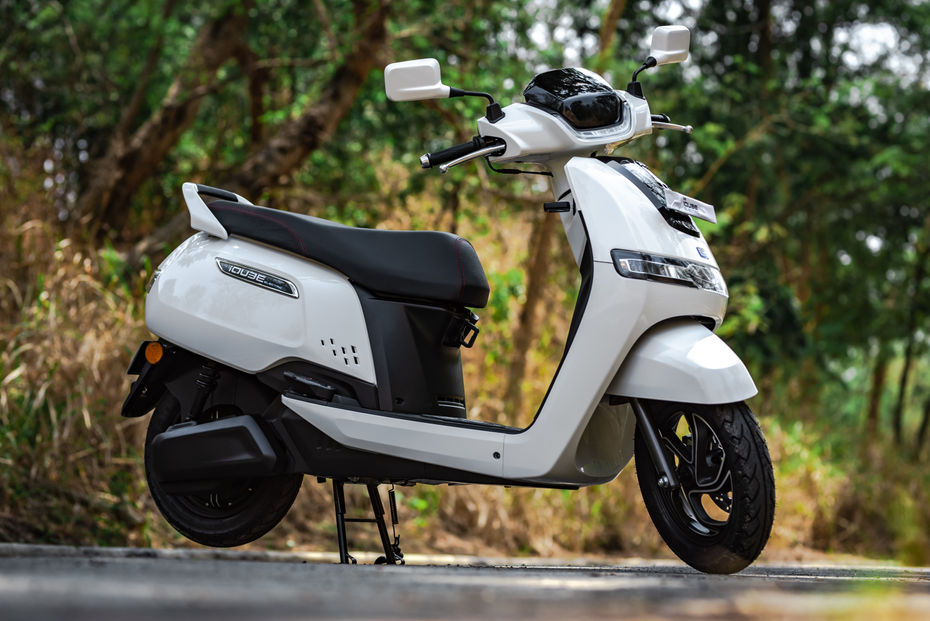
The iQube is about 10 kilograms heavier than the Jupiter, which is reasonable. Its bespoke chassis gives it a 25mm longer wheelbase too. At 770mm, its seat height is 5mm taller than the Jupiter too. The telescopic front forks, the 12” front wheel and disc brake are sourced from its ICE-powered sibling too. The state of tune is a bit different as well. And there is a crucial difference between the iQube and the Jupiter which sits on its rear wheel: the motor. This adds to the unsprung mass and could affect ride and handling. To counter this TVS has used twin shock absorbers and a dual sided swingarm.
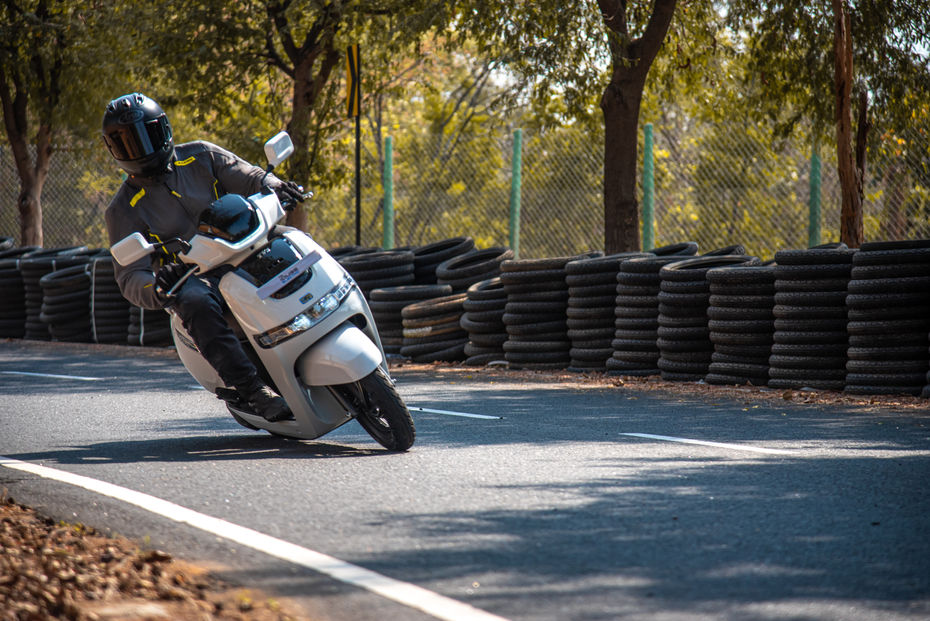
Get going and the iQube immediately feels both fun and confident. It is light to steer and yet very confidence inspiring. We had the iQube cranked over through the loop where it started to scrape the floorboard. This section has some notoriously placed bumps that test the suspension thoroughly but the iQube stayed planted through it. We even rode it over the pothole and paved track to sniff out any sign of poor ride quality. But it wasn’t harsh or sloppy, and the slight touch of bounciness is normal for scooters. The sense of composure and comfort extends even to its braking. Strong bite, the CBS system and the excellent grip from the TVS Conta 550 made it feel quite reassuring. However, a bit more brake feel would have been welcome.
Test 4: Arts & Crafts
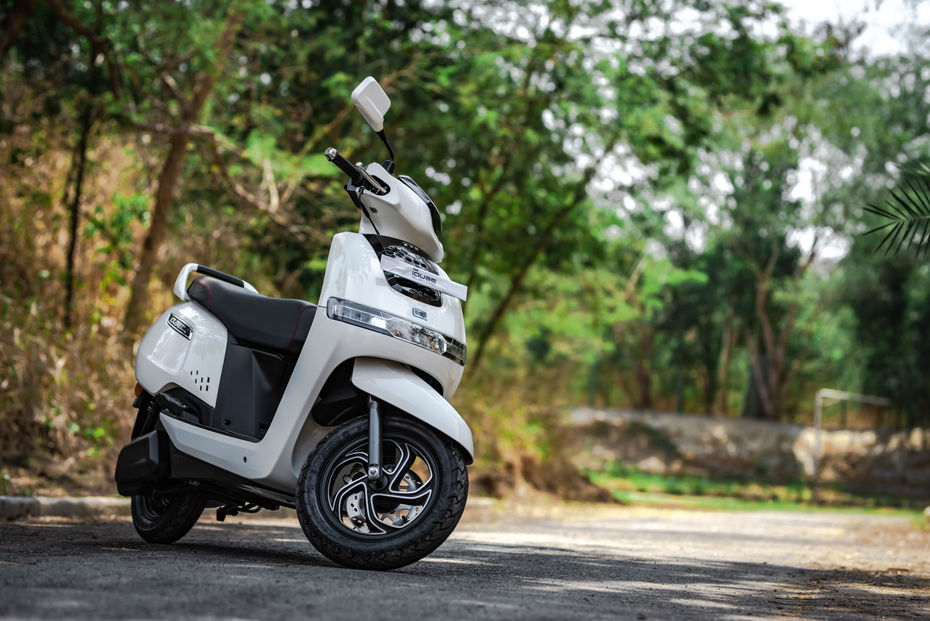
When it comes to putting on a show, the iQube is a bit lacking. Its design could well be considered to be the Jupiter 10 years into the future. No doubt the slim headlamp and tail lamp look pretty cool, but the overall shape feels quite conservative. This clearly isn’t a young and trendy design. However, that is a good or bad thing depending on who you are. But we are dead sure that the tone played at startup is from an Aquaguard, and that isn’t good.
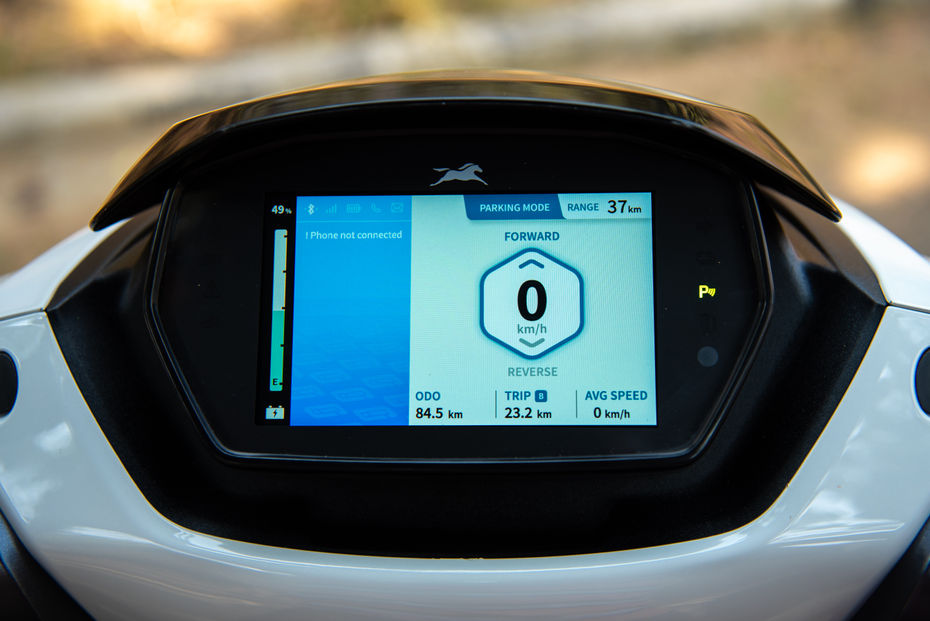
But it does have a bright and sharp colour TFT display that is great to use at any time of the day. But, it could be a bit more crafty too. Some pizzazz like the keyless go and touch-sensitive switches of the Bajaj Chetak or the touchscreen of the Ather would be welcome.
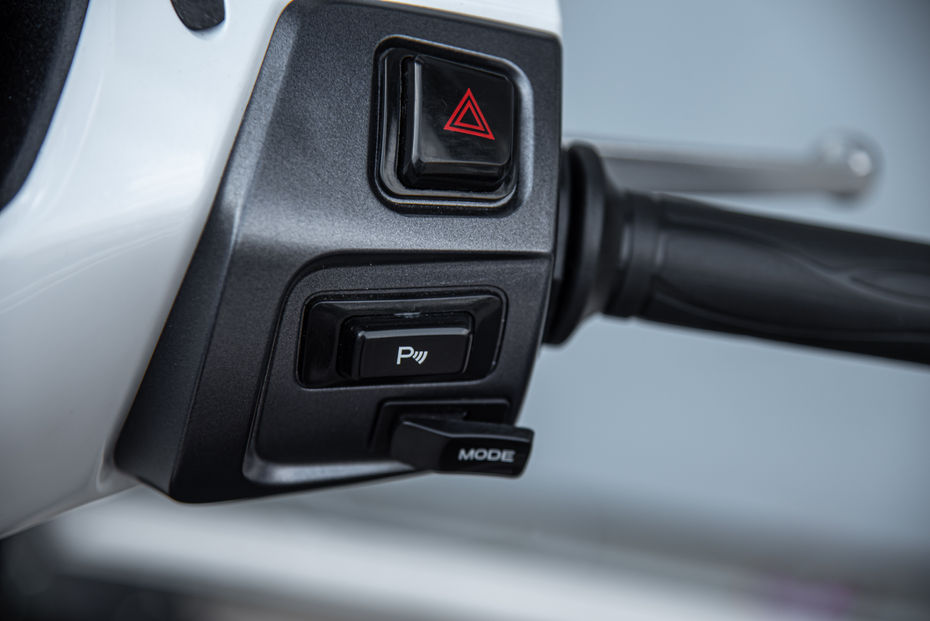
The awkwardly large switches for the hazard lights and the Parking mode, which are also horribly mushy to use, can do better too. Even the fit and finish of the panels around the instrument cluster felt below TVS’s usually high standards.

Even the ergos could do with a bit of tweaking. The handlebar tends to dig into taller riders’ thighs as the bars are positioned slightly low and a battery packed under the floorboard does hamper floor height a bit. However, it doesn’t feel knees up or awkward when getting on board. The floor board is spacious enough and the 21-litre boot is large, plus it packs a USB charging boot and a boot light.
Report Card - Prelims
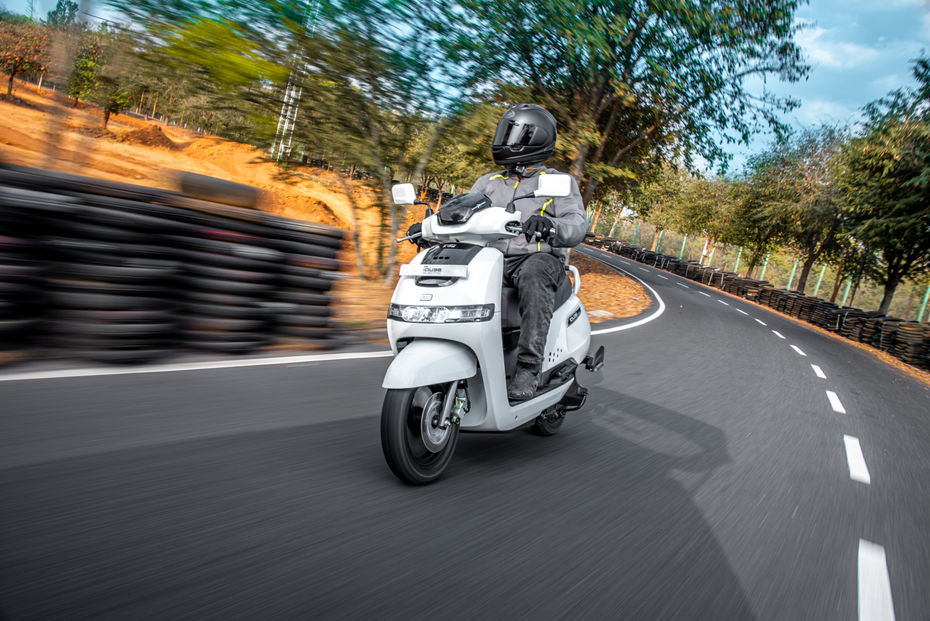
The iQube has a distinct personality and is very capable too, which makes it a solid scooter and a great fit for the TVS family. Although the indications from the test are reassuringly positive, we can’t wait to test its range in the real world. Its sensible quotient is evident by the bundling of the wallbox and one year’s subscription cost into its Rs 1.15 lakh price tag, albeit as an introductory offer. However, a little bit of premiumness in features and finish would go a long way. Aside from this the iQube’s foibles are centred around its charging system. For people living with secured parking spots this will not be a cause for concern. The biggest stumbling block, though, is that the iQube is currently available only in Bengaluru, with another two cities expected by the middle of 2020. Nonetheless, quite simply, the iQube passes this preliminary test easily TVS iQube Price.
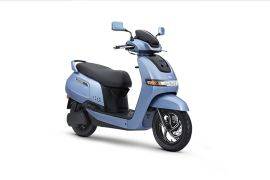

Top 5 Bike News Of The Week: TVS Acquires Norton Motorcycles, BMW G...

Secrets Of The TVS iQube

Ather 450X 18 Months Long Term Report: The Black Sabbath of Electric...

Ather 450X 2,000km Long Term Review - 5 Likes & 3 Dislikes

Ather 450X Gen 3 Real-world Road Test Review: Feels More Like Gen 2.1

2022 Ather 450X & 450 Plus: Same Wine, Bigger Bottle

Ather 450X Gen-2 2,200km Long Term Report: Hoping For A Longer Future

Ather 450X Long-term Report 1 - 500km: How To Adapt?

2024 Bajaj Chetak Premium First Ride Review: The Perfect Commuter EV
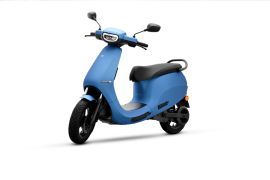 Ola S1 Pro
Ola S1 Pro
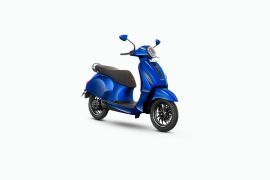 Bajaj Chetak
Bajaj Chetak
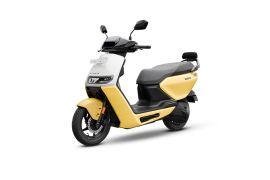 Ather Rizta
Ather Rizta
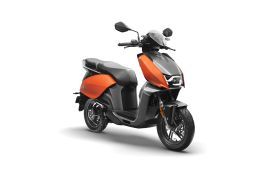 Vida V1
Vida V1
India's largest automotive community